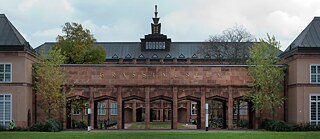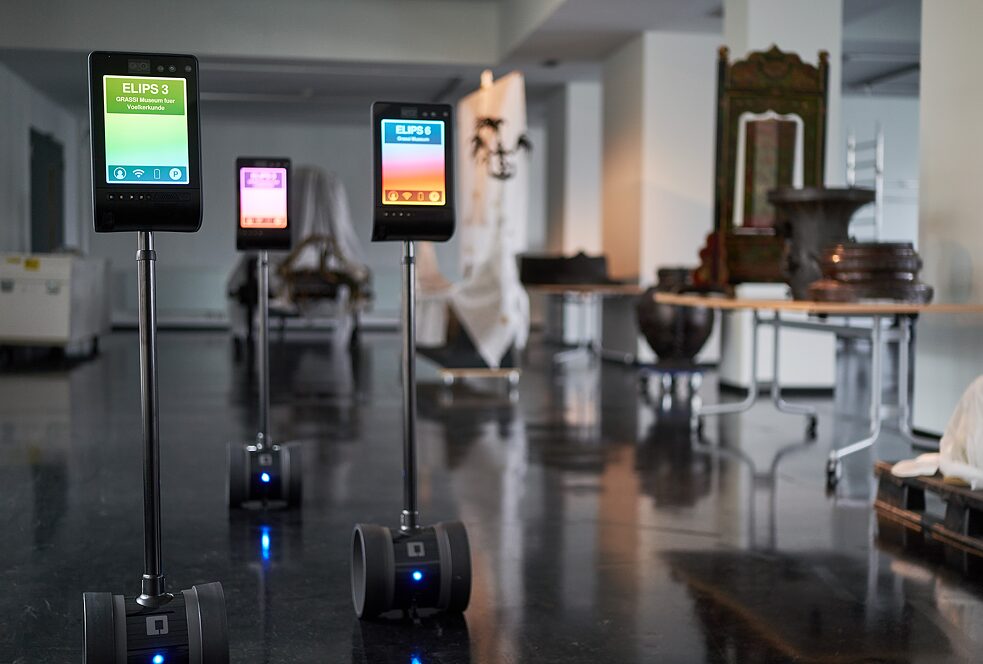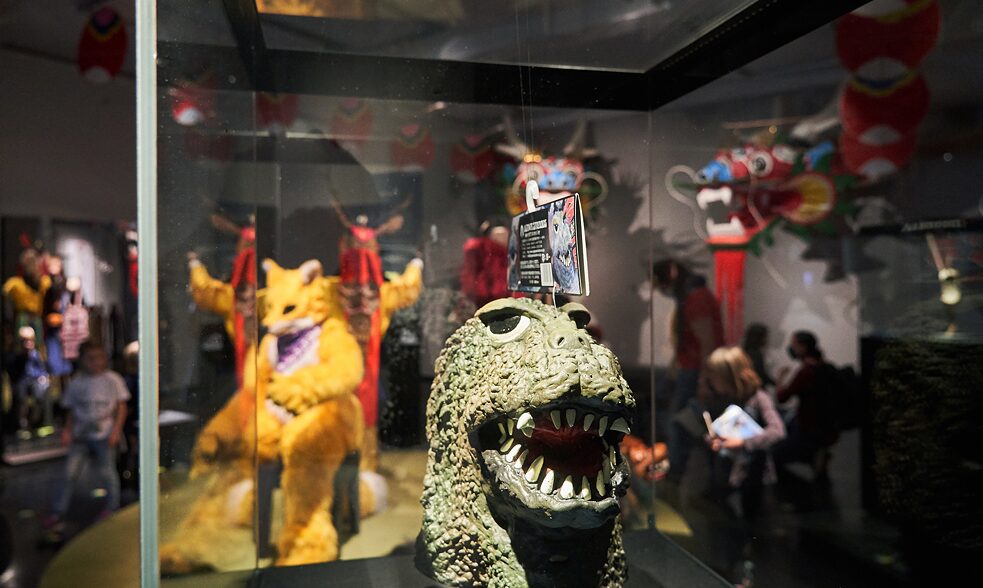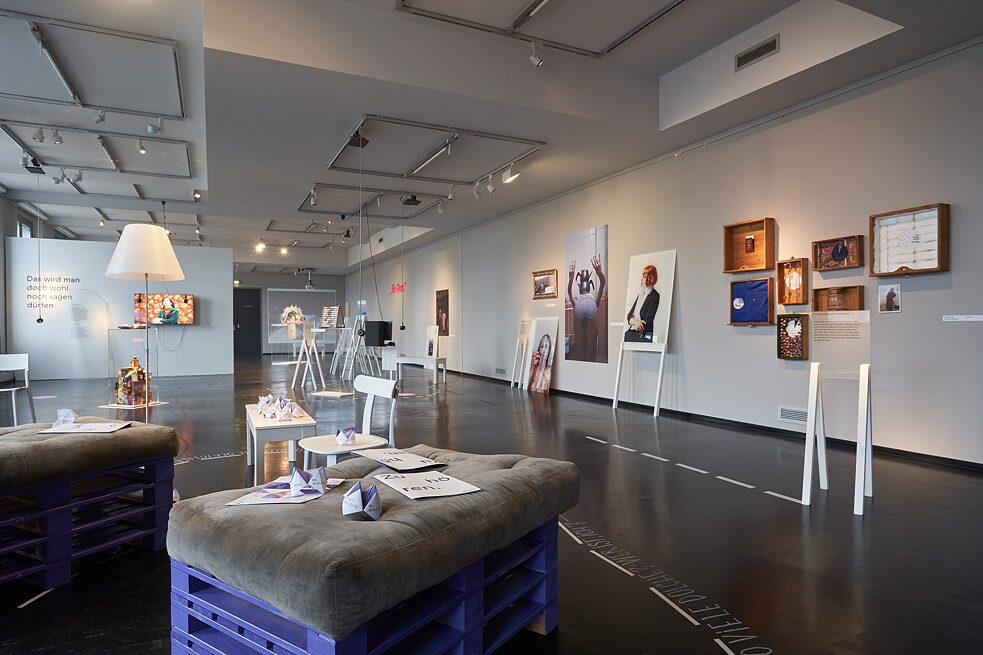Transparency in Restitution Processes Revealing the Colonial Past in Museums

The name of the museum, GRASSI Museum für Völkerkunde zu Leipzig, points to a colonial view of the world through the use of the term “Völkerkunde”. Renaming could be a part of decolonisation.
| Photo (detail): Arno Burgi © picture alliance / dpa
A lot of objects found in museums were looted during the colonial era. Many are in archives, others could be traumatising or humiliating for the societies of origin. How can museums provide more transparency and decolonise museum work?
The announcement about the restitution of the Benin Bronzes was made via the Federal Government in consultation with the museums that have objects from the Kingdom of Benin in their collections. How much decision-making power does a museum have to independently return objects to the society of origin? How does this return process work?For a museum institution that clearly profited from the colonial system, it is a historical and moral necessity to restitute the Benin Bronzes. Therefore, as an institution, we are also clearly in favour of restitution.
However, the decision to return the objects is that of the government. We act in an advisory capacity and participate in meetings concerning the restitution process. Subsequently, we discuss the return of the objects and future collaboration. For us, restitution isn’t the end of a process, but a new beginning. For example, we ask how can the staff of the State Ethnographic Collections of Saxony learn from the knowledge of their colleagues in Nigeria? How could we design joint restoration projects? How should conservation be carried out in future if, for example, we were to receive Benin Bronzes on loan? How can a common narrative sensitise people to the topic, for example in Leipzig?
The GRASSI Museum für Völkerkunde zu Leipzig has created a platform on decolonisation, restitution and repatriation. What prompted you to create this online platform and what goals are you pursuing with it?
The decolonisation platform aims to create transparency and accessibility. Interested parties can use this platform to find out about ongoing and past repatriation and restitution projects. Via the platform, individuals or communities can make specific enquiries about collection holdings, for which we then jointly carry out provenance research, and about repatriations, which we tackle together. Repatriation and restitution are some of the core tasks of our museums. In recent years, we have been able to repatriate important human remains, for example to Hawaii and Australia. Many repatriations are in preparation, many are still pending.
How problematic is it when museum names contain the word “Völkerkunde”? How can a more inclusive and accurate word be found?
The term “Völkerkunde” also stands for a history of the colonial view of the world. Critically assessing this history is an important part of our repositioning. A name influences how people perceive the museum and its work, whether they feel addressed and welcomed as visitors or as participants. We are in a process of renewal and discovery that aims to transform the museum into a network museum that reflexively engages with its own history and provides impulses for current and future-relevant issues. Therefore, we are working together with different stakeholders on a new self-image of the museum. Who do we want to be, where do we want to go together?
How can objects from the colonial era be shown in such a way that they don’t offend those affected and at the same time are instructive and stimulate discourse?
Similar to the repatriation of ancestors to their communities and the restitution of objects, this is about dialogue with the affected communities. For example, collaborative projects can develop ways to continue showing objects and telling their stories. Furthermore, it’s important for us to reveal and critically reflect on the museum’s colonial past.
We now have a fleet of telepresence robots. In simplified terms, you can think of them as smart tablets on wheels. They function like the digital conference programmes that many of us have been using since we began working from home. The only difference is that in addition to the image and sound transmission, I can also control one of the robots myself. The telepresence robots are available to visitors worldwide, and we also purchased them so that representatives of communities of origin can travel through the exhibitions or storerooms alone or with our colleagues. This allows us to be in contact with them much more directly and, above all, much more quickly so they can point out errors in our presentation. This increases pressure on us, but of course also increases transparency. Transparency is often promised, but how to implement it is not as obvious. You could say that telepresence robots are an experiment.
A large number of museum objects are in archives and not accessible to the public. How do you ensure that these hidden objects also contribute to discourses?
Transparency is a big keyword here as well. For some years now, we have been digitising our collection holdings and making them accessible in our online collection. Comments can be left there or enquiries can be made by many communities or researchers. Transparency is created through the digitisation of the collections, collaboration with researchers, but also by enabling digital access to exhibition spaces and the storerooms. With the help of a new telepresence robot, representatives of communities of origin can view collections together with us in the storerooms. Not only can we all see and hear each other, but also different camera settings allow us to zoom in very close, for example, or see things that the robot might not be able to reach.
Visitors with different social and cultural backgrounds and from diverse age groups are essential for a lively and diverse dialogue in museums. How can these different groups be reached and motivated to enter into a discourse with each other and about the objects exhibited in museums? How are the experiences from these encounters reflected in the exhibition plans?
In order to appeal to different groups, we usually design special themed exhibitions. For example, we designed the special exhibition Fantastical Beasts as a family exhibition. The special exhibition Scenes of Life, by contrast, was developed for an interested audience of specialists. For this exhibition, however, the focus was also on close cooperation with our restoration colleagues in Japan. Re:Orient – The Invention of the Muslim Other was developed by two curators who work in the field of anti-Muslim racism and brought with them a whole network of actors and artists who dealt with the topic sensitively and from a “non-white” perspective.
We try to build our networks in many ways and on different levels; sometimes activist, sometimes artistic, sometimes professional. All of this together results in the exact synergies we need for international relevance and, of course, also with regard to our vision for the future: Re.Inventing GRASSI. There will be a young museum here, a path that runs through the entire exhibition and is thought out together with kids and other young people. Our education team is on the move here, leaving the museum and going out into the city districts, for example, in order to reach those who would otherwise not come to the museum. Next year we will also create a so-called third place: to rest, to interfere, to help shape or to observe. Initiatives will then come to us and stay for a while to work here on site. All this will work without admission, because even admission fees can be a barrier for many people. We are currently working on this place, in the spirit of the network, with the Art Education and Curatorial Studies programme of the Zurich University of the Arts.
The Netherlands, your home country, was also significantly involved in the colonisation of the global South and is constantly reappraising its colonial history. What can German museums learn from the Netherlands in this respect?
The Netherlands have a much longer colonial history than Germany and the Netherlands even has territories “overseas” to this day. I therefore find the word “learn” in this context somewhat problematic.
But it is true that since 1949 with the independence of Indonesia and 1975 with the independence of Suriname, the Netherlands have had to define itself much longer and more deeply as a postcolonial society than Germany, where the postcolonial debate has only been visible in the feature articles in recent years. In general, museums have been positioning themselves more socio-politically since the 1970s. Museums are perceived less as research institutions and more as places of education and mediation. Germany is currently in the midst of this paradigmatic shift.
The colonial past and its consequences concern the here and now and must be negotiated by society as a whole. Museums have an important contribution to make. In the Netherlands, museums assume that the memory of slavery must not only be the concern of the community of descendants of enslaved people, but also and especially of the descendants of former slave owners.
The photo albums of officer Georg Ludwig Rudolf Maercker, who was transferred to the general staff of the protective forces’ command in what is now Namibia, are, for example, only shown closed in the Museum für Völkerkunde Dresden. What criteria do you use to decide whether certain objects are not shown at all or only in a restricted way?
The photo albums were shown closed in the special exhibition Wordless – Falling Silent Loudly at the Japanische Palais. We see it as our responsibility not to show sacred things that were originally only intended for certain groups of people or were only shown on certain occasions. But, as in the case of the photo albums, which obviously show colonial power relations and contexts of violence, we also do not show objects entirely or we provide them with notes. As an institution that houses things that come from colonial contexts and whose viewing can trigger painful emotions, it is our task to make these things available to the communities of origin and let them decide how they can be presented.
This interview was conducted in written form. The questions were asked by Juliane Glahn, trainee at the online editorial team of the Goethe‑Institut in Munich.




0 0 Comments